How to grow Gaillardia
This member of the daisy family originates from North America, where it grows naturally in open, sunny habitats such as prairies and hillsides. It flowers long and hard throughout summer and into autumn; its showy, daisy-like blooms offering shades of red, orange, or yellow, and often a combination. Most popular gaillardia species are hardy perennials, a few of which have spawned many garden cultivars. They are grown for their bushy, leafy habit and long, bright flowering period.
Gaillardia is also known by the common name of blanket flower, said to be due to its colourful centres resembling Native American blankets.
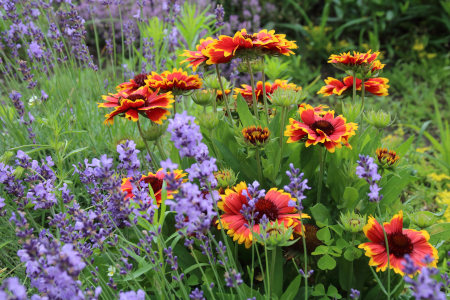
Zantedeschia is a genus of flowering plants from the family Araceae and is native to southern Africa. With a rich history dating back to the Ancient Romans, these deciduous or semi-evergreen perennials have been used as a symbol of celebration. Zantedeschia was Named after Professor Giovanni Zantedeschia, an Italian botanist.
There are two main forms of Zantedeschia: hardy and tender. Hardy forms of the plant can be grown outdoors, enjoy moist soil and full sun or partially shaded conditions - these are known as Arum lilies. Tender forms of Zantedeschia prefer being grown in containers or pots and should be brought inside over the winter - these are known as Calla lilies.
With tuberous flora in all colours from whites, yellows and oranges to deep reds and purples, Zantedeschias are not to be overlooked in any garden, as long as they have sufficient sunlight to grow in.
Ready to learn more about growing Zantedeschia? Read on for all there is to know...

Key Information
Soil pH
Position
Hardiness

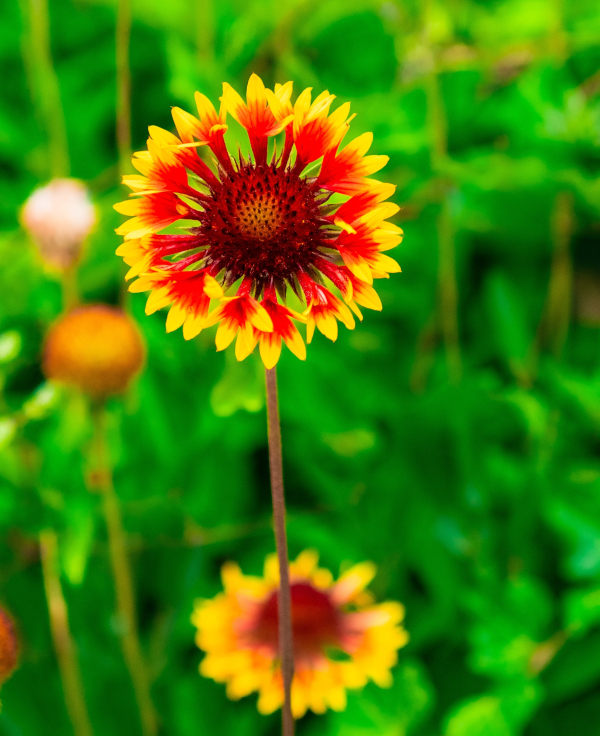
Where & when to plant Gaillardia
Position- A sunny, open spot
Soil- Best in low nutrient, well-draining soil
Flowering Period- Summer through to autumn
Hardiness- All those currently sold by Hayloft are hardy, though others can be half-hardy
For best results, plant in autumn or spring. An autumn planting can be done by those gardening in mild conditions (and broadly speaking, this is the southern half of the UK). For those liable to cold winters, it is best to wait until spring (generally the northern half of the UK). Planting can also be carried out in summer, though be prepared to water regularly.
Gaillardia is perfect for adding a splash of hot colour to sunny borders and containers. Its floriferous nature and long vase-life also suits it to a cut flower garden.
How to plant Gaillardia
In the ground
- Clear the chosen area of weeds.
- Dig a planting hole several times larger than the root ball. If your soil is on the heavy side, add a handful or two of horticultural grit.
- Place the plant in the hole, ensuring the top of the root ball sits level with the surface of the soil. Too low and the plant may rot, too high and the roots can dry out.
- Backfill with soil and firm in gently.
- Soak well with water.
- There is no need to mulch or add fertiliser, as gaillardia does best in a low-nutrient soil.
In a container
- Choose an appropriate container, ensuring there are plenty of drainage holes.
- Use a good quality potting compost with a little horticultural grit mixed in. There is no need to add any additional fertiliser granules.
- Start by partially filling the pot with compost; enough so that when placed on it the upper surface of the root ball is about 3cm lower than the top of the pot.
- Infill all the space surrounding the root ball with compost, firming down with your fingers then adding a little more so the plant is held tight.
- Pick up the pot and lightly tap on the potting bench or ground a few times to help further settle the compost around the plant.
- Soak well with water.
- A mulch with horticultural grit will look attractive and help to prevent a ‘cap’ or crust forming on the top of the compost (something container plants can suffer due to the artificial nature of their watering).
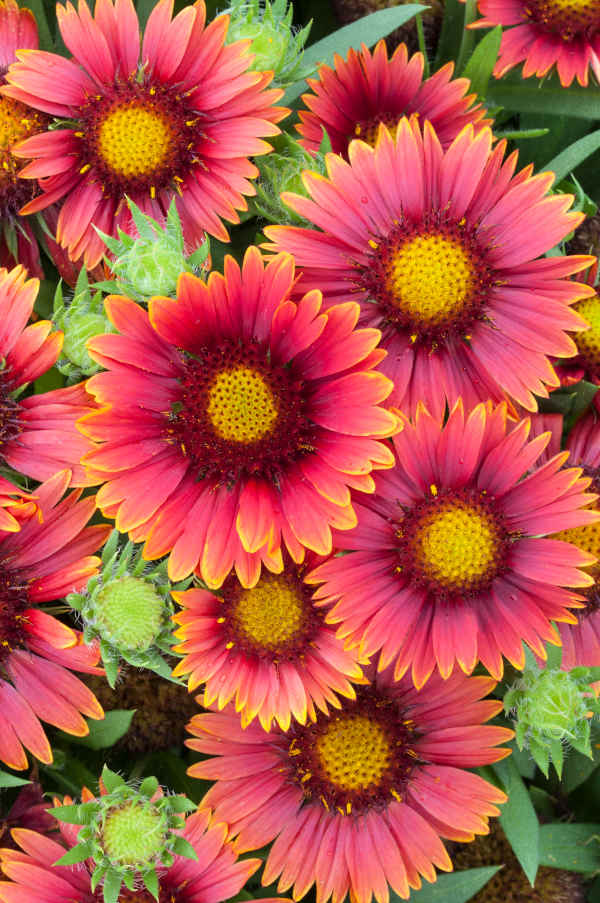
What to plant with Gaillardia
Gaillardia fits beautifully into a rich, warm-toned planting scheme; think along the lines of dahlia, canna, alstroemeria, kniphofia, coreopsis, and penstemon.
Another approach (and a particular favourite of ours!) is to recreate its natural, prairie habitat by pairing it with North American natives such as rudbeckia, echinacea, aster, and helianthus. Add a generous quota of ornamental grasses to complete the look, such as miscanthus, stipa, panicum, and pennisetum. Glorious!

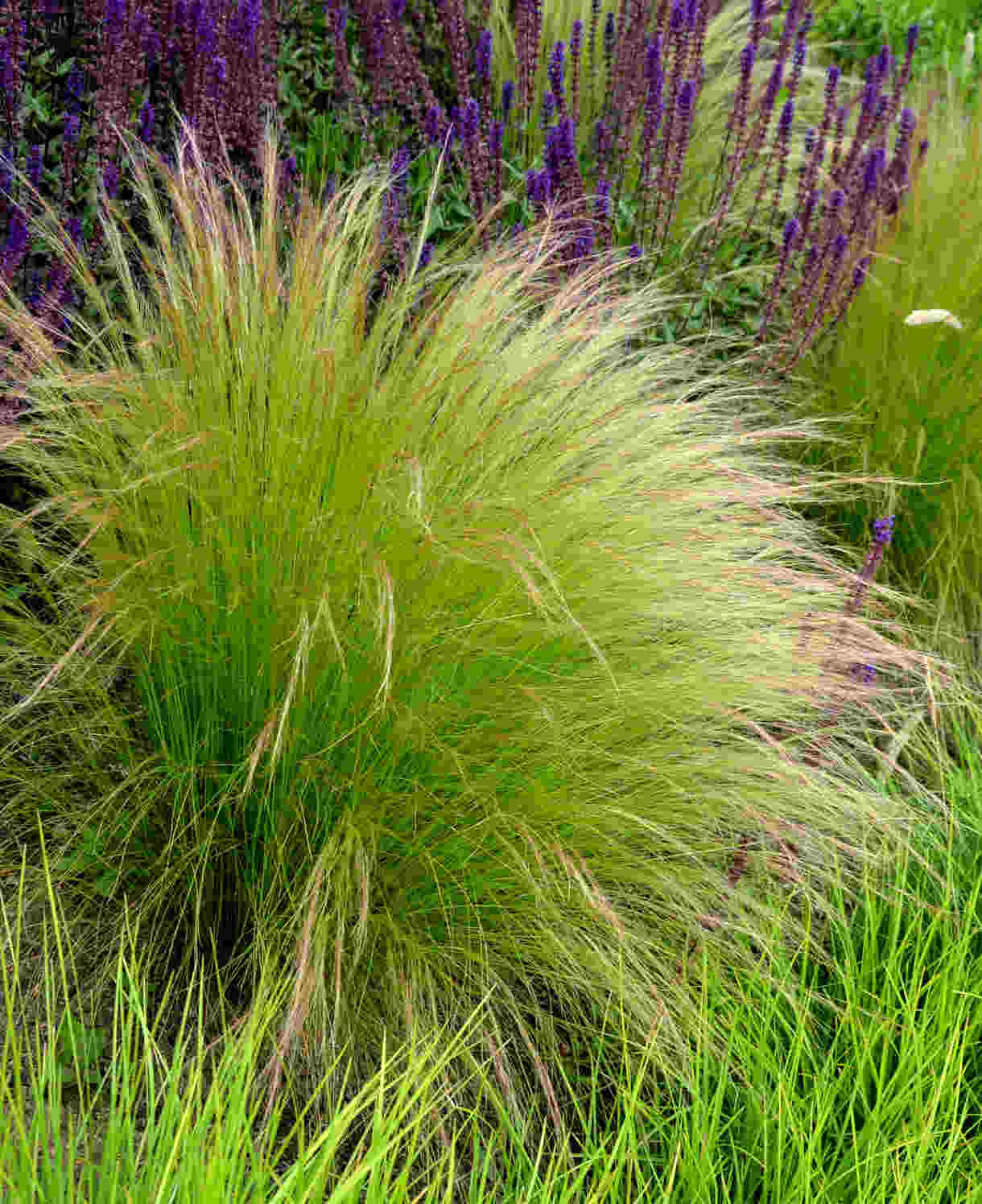
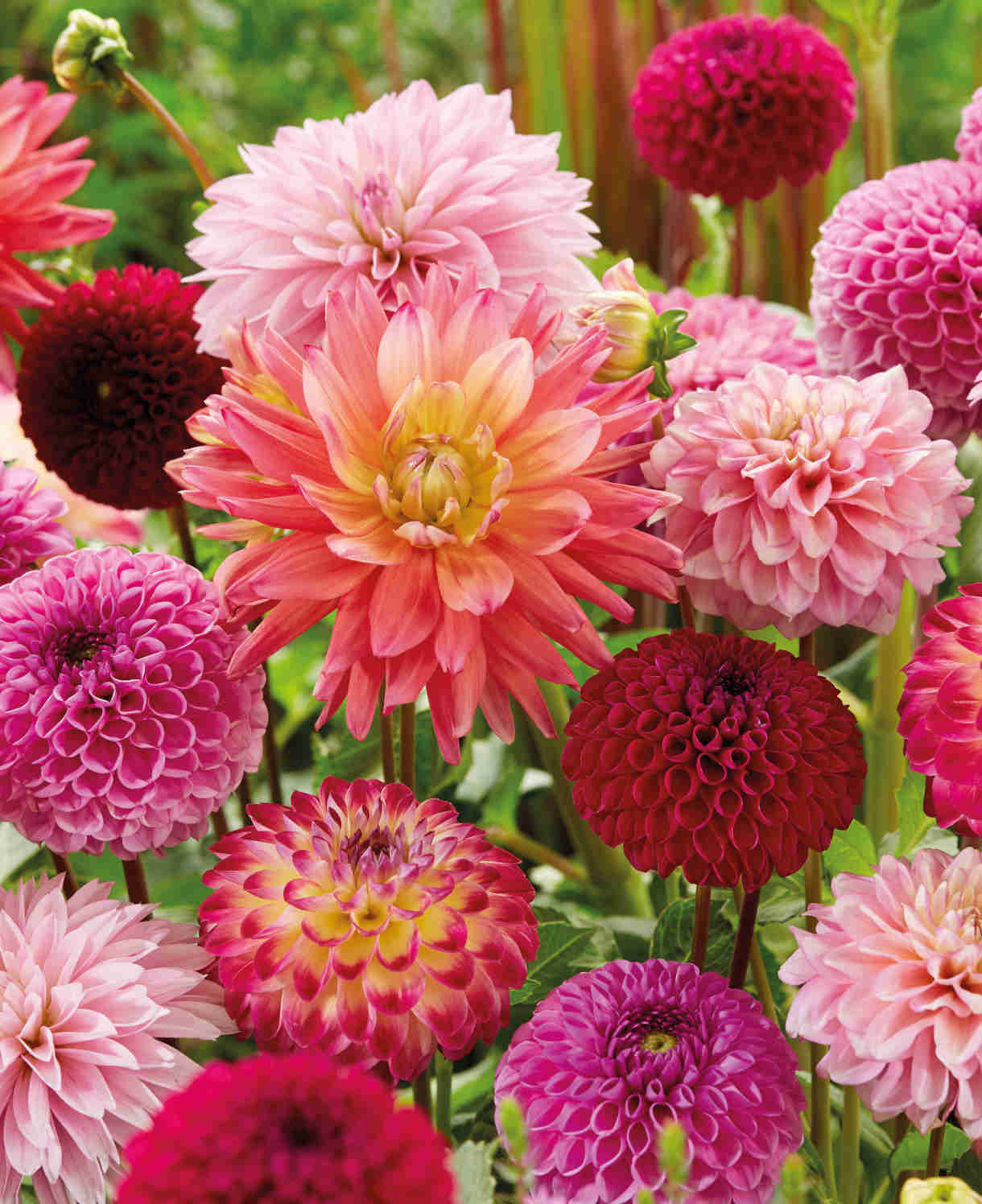
How to care for Gaillardia
Pruning and Deadheading
Gaillardia requires little input apart from regular deadheading to encourage further blooms, and an annual chop-back to around 15cm in late summer. Timing it at this point in the growing season encourages strong, new basal growth which is known to overwinter well.
Watering
Water gaillardia until established, after which it tends to be drought tolerant.
Container-grown gaillardia requires regular watering throughout the growing season, though allow the compost to almost dry out between waterings to avoid overdoing it. Keep feeding to a minimum, as gaillardia flowers best in low-nutrient conditions.
Cold Protection
All our gaillardia are hardy and should withstand the average UK winter without the need for additional protection. Having said that, they can be fairly short-lived perennials, particularly where winters are particularly cold and/ or wet. Equipping them with strong, healthy new foliage by following the pruning advice above can make a big difference to their overwintering abilities. Propagating plants every few years by division can also help. Not only does this give you more plants to work with (you might wish to hold a few back in a cold frame or unheated greenhouse as an insurance policy), but it also reinvigorates existing clumps.
Pests and Diseases
Gaillardia tends to be relatively pest and disease free, though you may find slugs and snails develop a taste for its leaves, particularly when they are newly emerging.
Encouraging natural predators into your garden, such as birds, frogs, toads, and hedgehogs, will make a big difference. Torchlight searches after dark (when slugs and snails are at their most active) are also effective, allowing you to collect the offending molluscs in a bucket. Place on the compost heap, or in a part of the garden containing less vulnerable plants.
Like most plants, once gaillardia is well established it tends to be better able to tolerate the actions of slugs and snails without the need for intervention.
How to propagate Gaillardia
Gaillardia is most easily propagated through division, best carried out in spring.
- Choose a day when the soil is not frozen or waterlogged.
- Dig the plant out of the ground.
- Shake off any excess soil.
- Separate the plant into sections using either swift, cutting blows with a sharp spade, or two forks inserted back-to-back with tines touching, handles then pushed together to prise the plant apart.
- Discard old, damaged, or surplus pieces, keeping healthy, vigorous material.
- Replant decent-sized pieces where desired, and any smaller bits can be potted up.
- Water well until fully established.
Common Gaillardia Questions
- Does gaillardia come back every year?
While you can get annual species, all of ours are perennial. This means that given the appropriate conditions, they should return for several years. - Is gaillardia hard to grow?
Gaillardia is fabulously easy to grow, requiring little in the way of watering, feeding, or ongoing maintenance. It is one of our favourite plants for ‘minimum input, maximum output’.





